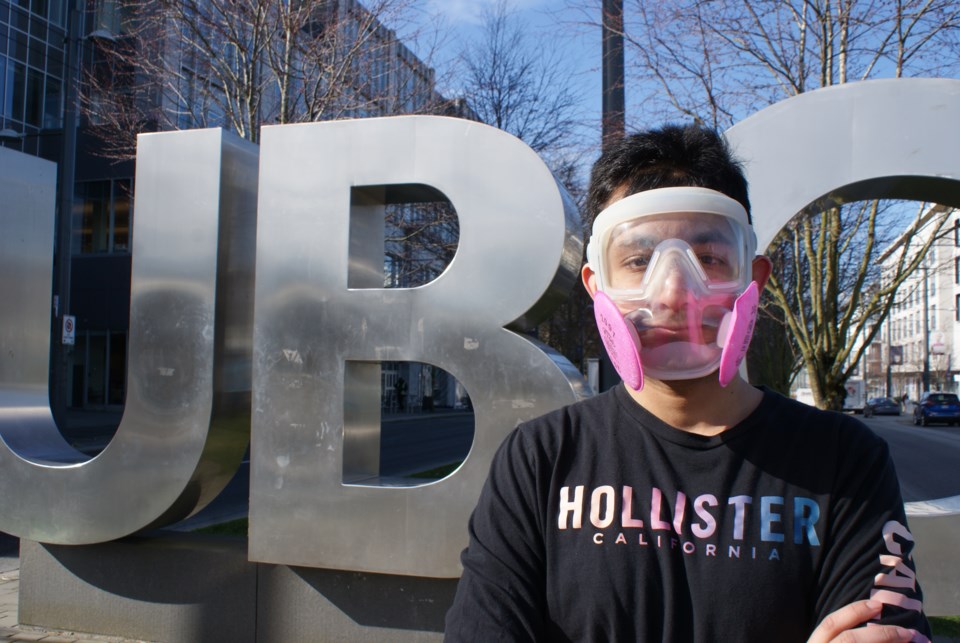Team member Faheem Saeed, a University of British Columbia (UBC) mechanical engineering student and lead designer, said it was apparent to the team that current equipment had too many air gaps and potentially allowed pathogens both in and out.
Further, he said, people were unhappy with masks lacking in transparency, frustrated they couldn’t see others’ faces.
“The main issue that we saw a year ago was that face shields were ineffective in blocking pathogens from the face as shown by numerous studies by researchers,” Saeed said.
“Protection of one's eyes and breathing is important in this time. Furthermore, no full respirator could be used by healthcare professionals as all of them were bulky, had microcavities which were not efficiently sanitizable, and did not filter exhaled breath.”
Another issue identified by the team – Suri Banerjee and Albert Yau of UBC, Wild Guevara of the University of Calgary and Riju Singh of Western University - was current respirators having too many parts. “They can’t be cleaned,” Saeed said.
So, they developed the idea of the Tusk, named for B.C.’s Black Tusk peak in Garibaldi Provincial Park, said Saeed, a Malaysian native living in Vancouver for the past six years.
What they’ve developed, he explained, is a cavitiless, low-profile, fully transparent, MRI-safe, full-face piece respirator.
“The full respirator can be fully sanitized efficiently after use in hazardous environments which is not possible in normal full respirators,” he said, noting the P100 filters are effective in filtering out lead dust, silica, metal dust and multiple other substances.
“This makes it ideal for use in the mining and metal industry,” he said.
“I think there’s definitely a market for it in different industries,” Singh said. “It’s very different from the full-face respirators that are out there.”
She said she was briefed by Saeed about the idea last year and did some further research.
“This is definitely an advancement that needs to be talked about,” she said.
Further, the mechanical engineering student said, the mask has been designed so facial features are visible allowing not only technological facial recognition but also visibility of the mouth to allow for lip-reading by those with hearing impairments.
“You can unlock your phone with it on,” he said.
That facial visibility would also allow for people to read each other’s emotions better, he said.
Saeed said the respirator can be used in medical autoclaves for sterilization, are lighter than standard masks allowing for longer wearing periods.
He said there has already been interest in the equipment from dentists, a hospital in the United States and some Vancouver hospitals.
As for travellers, Saeed said the gear could be useful for travellers to high population density areas.
I think it would make people feel a lot safer when you’re travelling in highly congested areas,” he said.
But, he said, there remains some testing and certification of the respirator ahead.
Moreover, Saeed said, the team thinks people might look better than in current bulky respirators.
“People look really odd,” he said.
The respirator project is not the only COVID-19 work underway at UBC. Researchers across many disciplines are adding to the pool of knowledge in areas including vaccines, transmission, social impacts, healthcare, business, mental health, technology and may others.
@jhainswo



